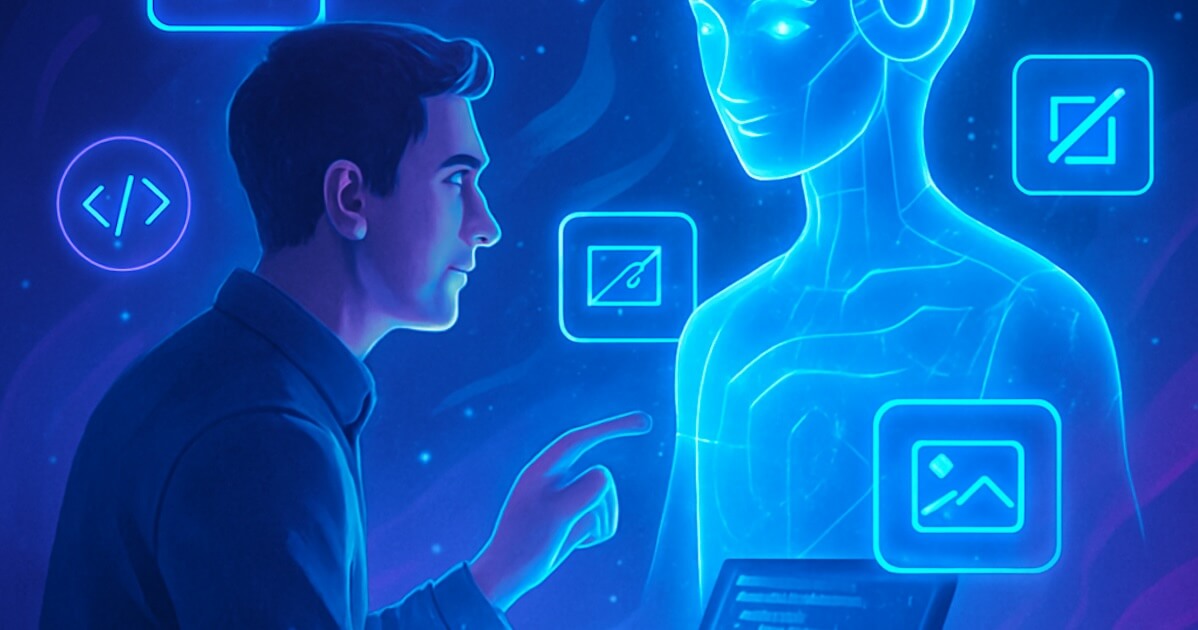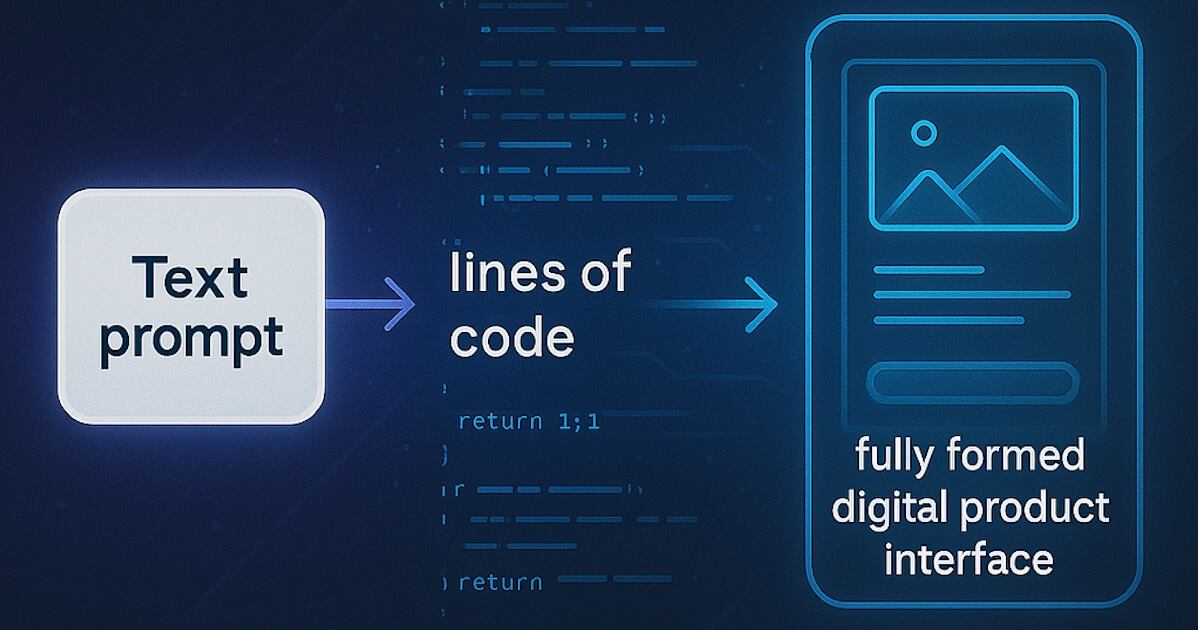It was a Tuesday, the kind where the London drizzle seemed to seep into your bones, even if you were miles away in Basingstoke (my home town). I was tasked with a rather daunting project, or not really as you will find out: designing and deploying a real-time Sentiment Analysis product for a major telecommunications company, and, oh, they needed it yesterday.
Or so it felt.
Now, usually, this would mean weeks of planning, coding, debugging, and endless cups of tea. But this time, something was different. I decided to try something I’d been experimenting with – something I now call “Vibe Coding.”
(Ok, granted it wasn’t me who invented this term - I’m referring to former Tesla AI Director Andrej Karpathy who defines this new way of engineering)
Let me tell you, what unfolded was nothing short of revolutionary. In just under four hours (including toilet breaks), I went from a blank slate to a fully functional, deployed product. And the kicker? The only code sitting in my GitHub repository were my prompts.
Yes, you heard that right. Prompts.
Prompt and more Prompts.
Perhaps I should do a comparison between Java & Python & Prompts and update my Java vs Python post.
This makes me think that two-week default Agile Sprint cycles might become soon two-days instead. AI is changing us as “AI” engineers.
If you’re an IT / AI / ML Engineer or any type of engineer you have to pay attention if you want to survive in a world where efficiency is going through the roof using AI productivity tools.
This isn’t your grandfather’s software development. This is the era of AI-assisted coding, where the lines between engineer and product designer blur. And it’s changing everything.
What Exactly is Vibe Coding?
You might be wondering, “What in the world is ‘Vibe Coding’?” Well, imagine you’re a painter, but instead of mixing colors, you’re describing the masterpiece you envision to an incredibly talented assistant who brings it to life. That’s vibe coding in a nutshell.
Coined by the brilliant Andrej Karpathy, vibe coding leverages AI tools to automate code generation. You describe your software ideas in plain language, and the AI translates that into functional code. Think of it as prompt-driven development, where the focus shifts from writing code to defining the desired functionality.
And you see that the trend is strong and still very recent, it all started in February 2025.

My Real-World Experience: Sentiment Analysis in 4 Hours**

Let me walk you through how I did it. I used Cursor and o3-mini. (but any IDE like Windsurf, Replit, Lovable and any reasoning LLM will work)
I started with this prompt:
"Ask me one question at a time so we can develop a thorough, step-by-step spec for this idea.
Each question should build on my previous answers, and our end goal is to have a
detailed specification I can hand off to a developer. Let’s do this iteratively
and dig into every relevant detail. Remember, only one question at a time.
Here’s the idea:
I want to write a sentiment analysis for customer feedback where AI scans reviews,
social media and feedback forms and provides real time sentiment tracking for store managers
and reports that highlight trends no customer satisfaction and improvement areas"
I used o3-mini that guided me through a series of questions, refining the project’s scope and requirements. It was like having a brainstorming session with an incredibly patient and detail-oriented colleague.
Once we had a solid plan, I used this prompt:
Now that we’ve wrapped up the brainstorming process, can you compile our
findings into a comprehensive, developer-ready specification? Include all relevant requirements,
architecture choices, data handling details, error handling strategies, and a
testing plan so a developer can immediately begin implementation -
we want to build this in Node.js with React.js and we must build this with a
superior UI/UX design like material design .
And bam! A complete developer-ready specification, including testing and deployment plans. It felt like magic, but it was just smart AI.
The final step was to get o3-mini to generate a step-by-step implementation plan:
Draft a detailed, step-by-step blueprint for building this project.
Then, once you have a solid plan, break it down into small, iterative chunks that build on
each other. Look at these chunks and then go another round to break it into small steps.
Review the results and make sure that the steps are small enough to be implemented
safely with strong testing, but big enough to move the project forward.
Iterate until you feel that the steps are right sized for this project.
From here you should have the foundation to provide a series of prompts for a
code-generation LLM that will implement each step in a test-driven manner.
Prioritize best practices, incremental progress, and early testing, ensuring no big jumps in
complexity at any stage. Make sure that each prompt builds on the previous prompts,
and ends with wiring things together. There should be no hanging or
orphaned code that isn't integrated into a previous step.
Spec: see above
Make sure and separate each prompt section. Use markdown. Each prompt
should be tagged as text using code tags. The goal is to output prompts,
but context, etc is important as well.
And to make sure I stayed organized, I asked for a todo.md file - Why not?
Can you make a todo.md that I can use as a checklist? Be thorough.

The result? Ten detailed prompts, each building on the last, guiding me through the implementation process. It was like following a recipe, but for software.
The Impact of Vibe Coding
Vibe coding is more than just a novelty. It’s a paradigm shift. As one engineer put it, “I don’t debug anymore — I describe the issue, and my AI pair handles it. I’m spending more time on vision, less on syntax.”
- Another shared, “We don’t backlog features anymore. We prompt, test, and ship. Product iteration is basically instant.”
- And yet another: “I moved from writing code to writing intent. It’s like giving your thoughts a compiler.”
These quotes aren’t just anecdotes. They reflect a fundamental change in how we approach software development. We’re moving from being coders to being conductors, orchestrating AI to bring our visions to life.
The Future is Now
Tools like Replit Agent, Bolt, Lovable, and Cursor are democratizing software development, making it accessible to non-programmers and accelerating prototyping for experienced developers.
Of course, there are criticisms. Some argue that vibe coding can lead to a superficial understanding of code. But as AI evolves, these concerns will likely be addressed.
What Does This Mean for You?
Vibe coding isn’t just a trend; it’s a revolution. It’s about empowering you to bring your ideas to life faster than ever before. It’s about shifting your focus from syntax to strategy, from debugging to design.
So, are you ready to embrace the future of software development? Are you ready to become a product engineer?
Let’s discuss how vibe coding is shaping the future of tech. Is generated code using this technique production-ready code?
Be aware: copy-paste != understanding code!
References
- Andrej Karpathy’s insights on AI-assisted coding aka Vibe Coding.
